Ancestral spirituality
For so long and so patiently, the world’s first peoples have waited for the time in which we are now immersed. Among the Anicinape First Nation (the tradition to which I belong), among the Mohawk, Maori and Mayan peoples, I have heard prophecies that mysteriously coincide:
” One day, these prophecies essentially say, after interminable difficulties for our peoples, the white man will come knocking at our door. Having lost his balance, he will ask us to talk to him about our vision of the world, our relationship with the Earth and the Cosmos. Then the time will come for reconciliation between us. And if the white man makes the right choices, humanity will be propelled into a great movement of transformation and rebirth.”

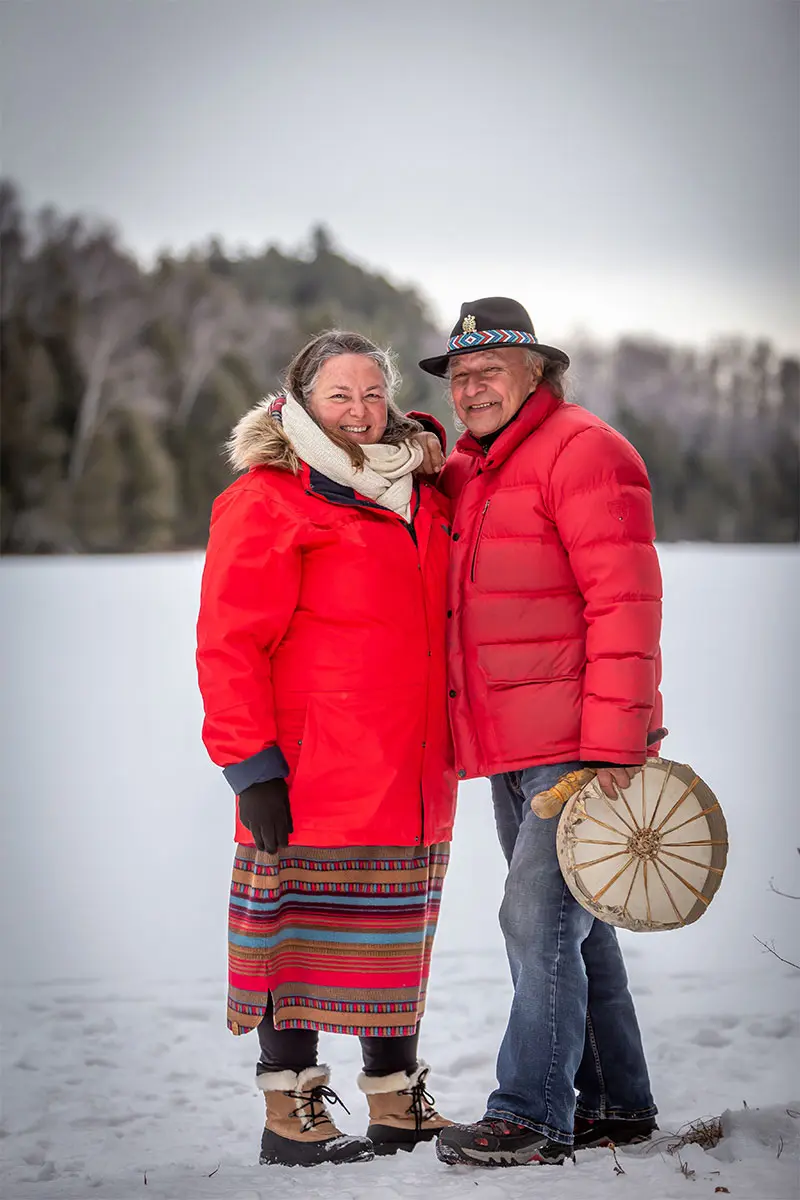
According to the vision of the elders, what is this loss of balance?
If you ever take part in one of our pipe ceremonies, you’ll find that these sacred objects are made up of two parts: the stone and the stick, representing the feminine and masculine aspects respectively. During the ceremony, we bring these two parts together, symbolizing the whole dynamic of Creation. We connect what is all too often divided in human beings, and yet is at the origin of all births!
These two parts coexist within us: our logical side, our power of action and organization, science, the spirit of conquest… This is what we call the masculine. At the same time, human beings also possess the capacity to collaborate, to listen, to be silent in order to hear the voice of their intuition; they can access their power of interiority, gestation and creativity… This is what we call the feminine. The first is linked to the Cosmos. The second is linked to the Earth. What the wise men of the first peoples have been telling us for centuries is that human beings risk losing themselves if they don’t value these two poles. If they don’t learn to synchronize Heaven and Earth within themselves.
The elders of the spiritual lineage to which I belong – that of William Commanda, Tom Rankin and his son T8aminik (Dominique) Rankin – know that the men, women and two-spirited beings of the modern world are tired; that they are stressed, even anguished, by the mad race in which they feel trapped. So the elders call out to us:
“Are you really acting to the best of your ability?
If your energy level is constantly low, if your inner compass is out of whack, if you’re trying to control everything externally, what exactly are you giving back to the world? And what are you teaching your children?”
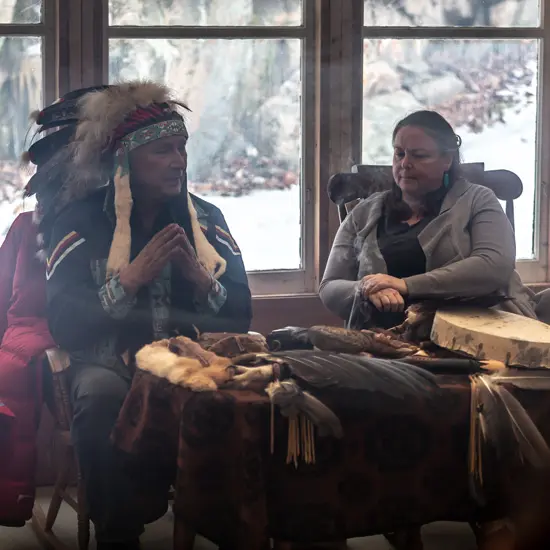

Civilizations that knew how to honor the feminine never destroyed the Earth. It goes without saying that the Earth needs us if we want to exist in a few decades’ time. The evidence is there. We all know that action is urgent and imperative. What can we do, you may ask? Of course, we can put all our know-how and science at the service of a sustainable future. But from the point of view of our elders, that’s not enough.
The climate crisis in which we find ourselves, the increasing tendency to divide and war, and the growing sense of anxiety among many adults and children are all reflections of the climate crisis in the hearts and minds of human beings. This is where we need to take action. Not just on the outside. Otherwise, we’ll repeat the mistake!
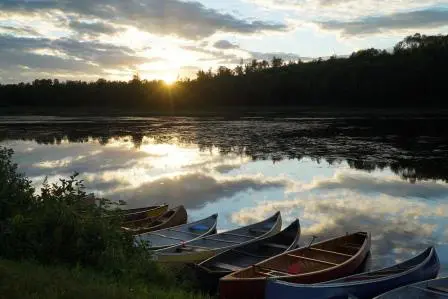
At this level, the wonderful thing is that we can all act individually: put gentleness back into our hearts; get back on our feet, firmly rooted in the earth, by reconnecting with ancient wisdoms; relearn to connect with nature to silence the hubbub in our heads; honor our medicines, i.e. our gifts and talents; discover that the only space where we can truly feel safe, alive and creative is in the heart of the deep river within ourselves, this boundless source that I also like to call theIntelligence of Love.
I set out in the footsteps of our Anicinape ancestors because I feel the urgent need to reconnect with that other shore of ourselves that our so-called modern civilizations have evacuated by violently dismissing the wisdom of the first peoples. This violence imposed on indigenous peoples was in fact imposed on all of us!
Beyond the harm that has been done, today I see the prophecies of the ancients unfolding before my eyes. It confirms to me that something greater than ourselves is at work. I feel a deep joy in participating in my own way in the great movement of reconciliation and rebirth that was foretold.
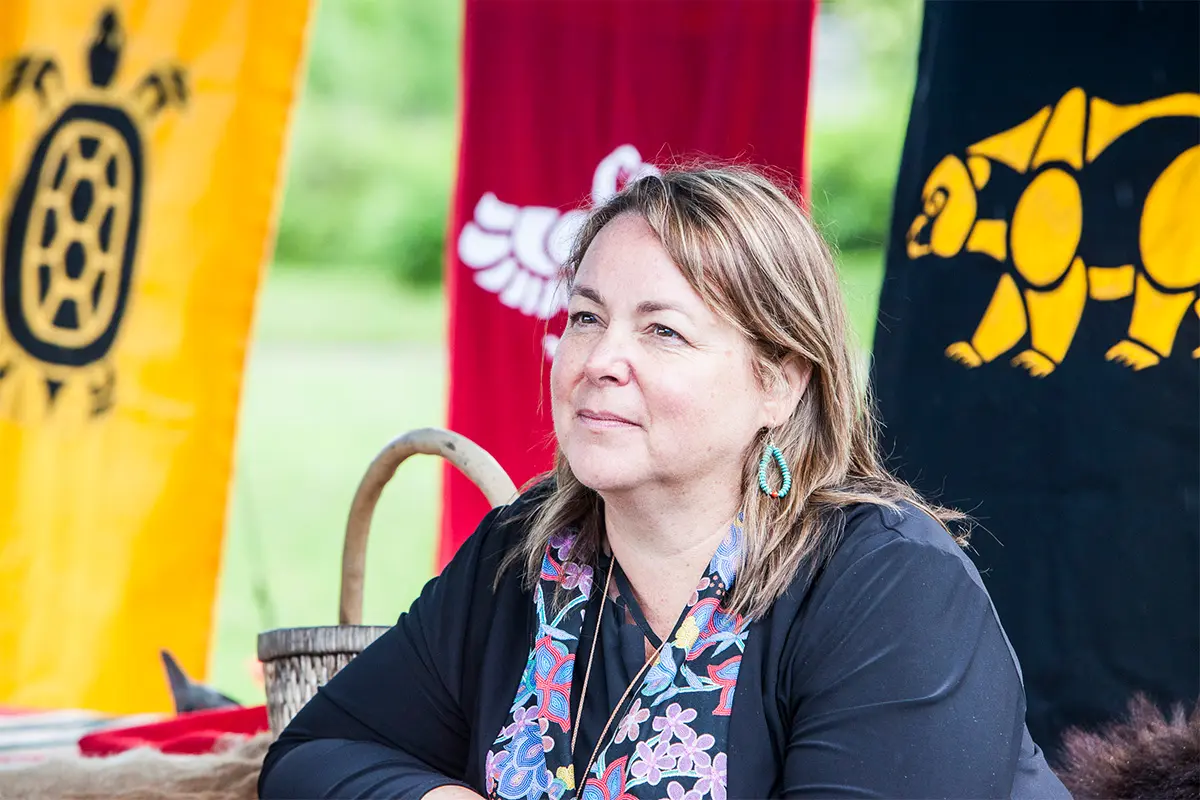
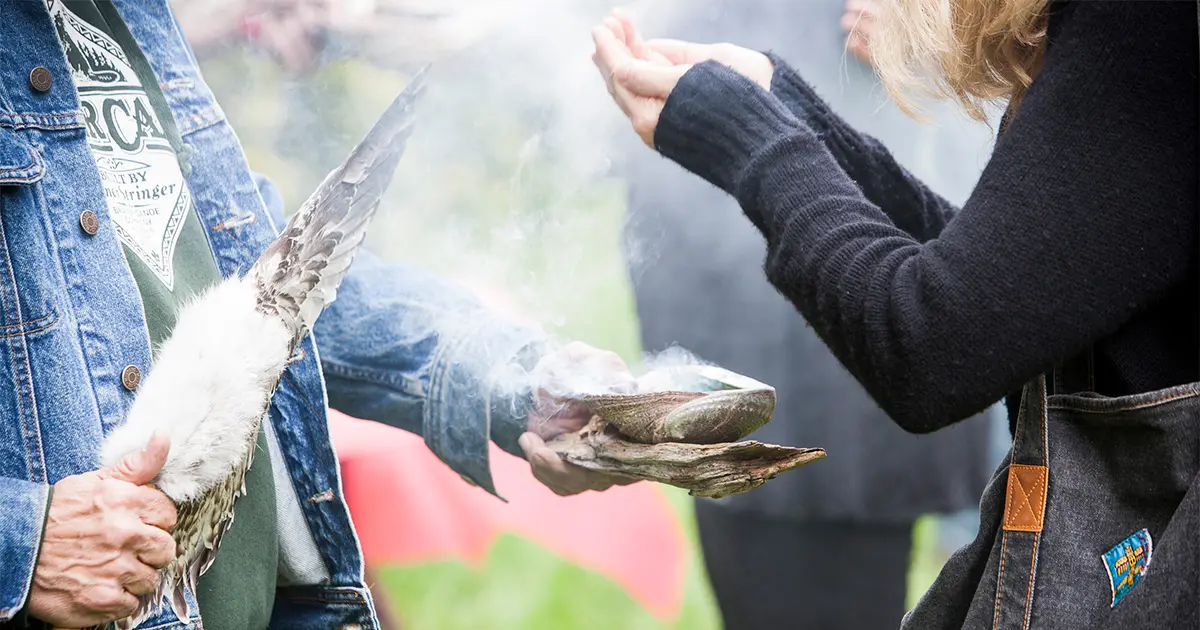
The spiritual vision of Pierre Teilhard de Chardin
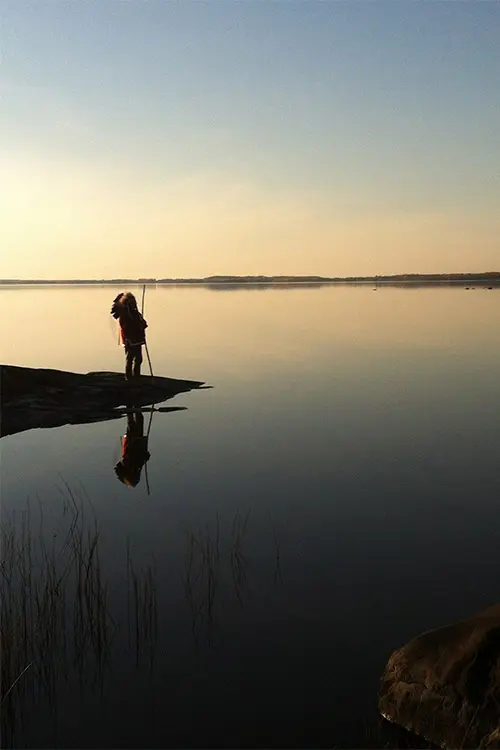
What is the role of a healer in Native spirituality?
Elder T8aminik Rankin and Marie-Josée Tardif will never use the expression “healer” in the context of their work. They consider it a risky expression, as a person coming to them in the hope of healing could hand over all their power, whereas each of us needs to be put in touch with our own inner power.
We could say that their role is to create a “space of medicine” within which the person can rediscover the path to their own connection with the intelligence of life.
How can indigenous spiritual knowledge be passed on today?
Marie-Josée, Grandfather T8aminik, as well as his father, Tom Rankin, and his guide William Commanda, have always encouraged a very inclusive vision of indigenous spirituality. From their point of view, feeling attracted by a particular tradition has nothing to do with our parents’ DNA or the color of our skin. That’s why we should never close the door to anyone who feels the urge to discover and experience our traditions.
On the other hand, as the guardians of an unbroken line of transmission, they also have a duty to protect certain practices that would be too likely to be diluted if they had to pass everything on to everyone at full speed. This is why Elder T8aminik is sometimes stricter about the transmission of certain teachings, rituals or sacred objects such as pipes or drums, for example. They respect the custom of not letting students to choose their teachers, but rather teachers to choose their students, for the training of future medecine men and women. When the latter accept the role entrusted to them, it means a lifelong commitment and a transmission (oral, not written) that takes place over the very long term.
That said, they happily encourage all those who receive their basic teachings, as part of their activities open to all, to transpose them in their own way into the modern world. They feel that the millennia-old wisdoms whose essence they protect are meant to inspire tomorrow’s world to create its own medicines. It’s simply a question of remaining who you are; not ascribing to yourself a role, title or knowledge that has not been expressly entrusted to you by an elder.
How can we preserve First Peoples' cultures today?
In its Convention for the Safeguarding of the Intangible Cultural Heritage, UNESCO states: “Communities, in particular indigenous communities, play an important role in the production, safeguarding, maintenance and recreation of the intangible cultural heritage.” Despite oppression on every continent, indigenous peoples have succeeded in maintaining a living, rich and varied heritage. Just as it is urgent to protect the Earth, so it is urgent to protect this knowledge, which is unraveling under the influence of globalization and the exhaustion of elders.
Of course, a culture must evolve and change with its influences, but a tree can’t reach for the sky if its roots aren’t healthy. It was with this in mind that Grandfather T8aminik and Marie-Josée founded Kina8at-Ensemble, as well as the Dominique Rankin Foundation.
We can all contribute to their mission in various ways, whether by donating our time or money, or by taking part in the activities they organize: healing stays, creative workshops, major ceremonies and so on. Participating in these activities helps keep the teachings alive.
Find out more about the work of T8aminik and Marie-Josée.